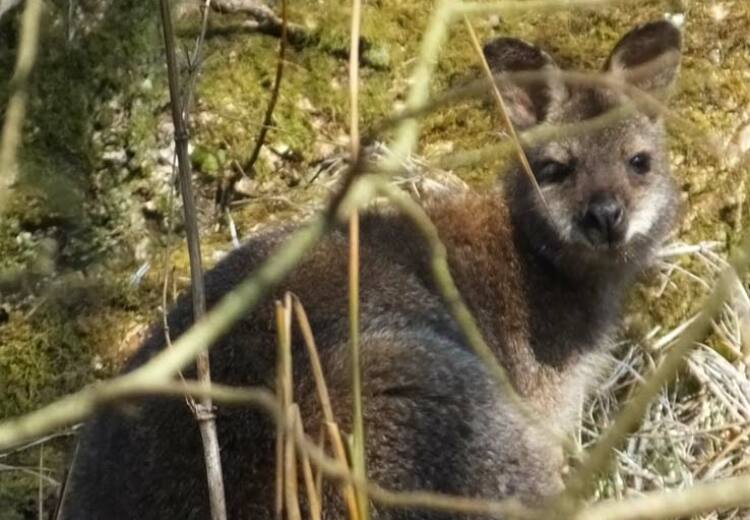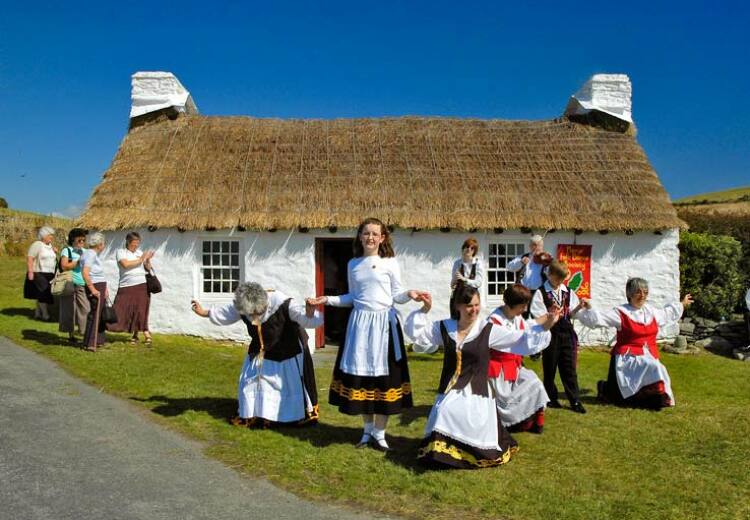THE first sprouts of our future allotment wildflower meadow popped their heads out of the soil over the weekend. Tiny and perfect with their fragile baby green leaves and representing more than 60 varieties of flowers and grasses, these tiny seedlings will germinate and grow for the next month or so and then bunk down over the winter as small plants.
Once the warmer days of spring arrive they'll shoot up like rockets and if all goes to plan we'll have an insect-friendly patch of willowy grass and cheerful blossoms by next summer.
Wildflower meadows are becoming quite the rage these days with both gardeners and farmers the world over. Delightful in their sweet-shop-like variety of colour and scent, they are low-maintenance, attract beneficial insects, and help promote plant diversity.
They can also be an eco-friendly yet practical way to seed fields used as pasture or left fallow. Being that their only essential care factor is that they are grazed or mown a couple of times a year makes them ideal for grazing animals or for harvesting as hay. And with so many varieties of grass, clover and succulent petals they must make for contented livestock as well as healthy wildlife.
Though pastures surround our allotment and cows are frequently seen eye-balling our cabbages from over the fence, there is no intention on our side to ever invite them in to our own meadow. Our goal is to instead create a habitat for wildlife, especially insects beneficial to organic gardening.
Restricting the use of pesticides and herbicides in our allotment makes for healthy produce but much more work on the gardener's part. Fortunately, having insects such as ladybirds, hoverflies and honey-bees about can help take the load off.
Their munching of aphids and other free-loaders as well as pollination of crops makes them a welcome addition to any garden. It's also our intention to begin introducing bee-hives to our site next year and providing them with a source of nectar rich forage has been a driving factor to the creation of a wildflower meadow.
We began our project last autumn with a visit from Andree Dubbeldam, the project manager for the Wildflowers of Mann division of the Manx Wildlife Trust. I and another allotment committee member met him at our site to give him a tour around the areas we were considering planting up and to try to absorb as much of his knowledge as possible.
It was really helpful having him there in person and he provided us with much needed and specific advice such as instruction on how to go about preparing the land, sowing the seeds, and aftercare for the mature meadow.
It can take anywhere from 1.5-2.5 years to achieve a successful meadow so we began early this year with digging over the first of hopefully many such plantings. The trick to making sure that the seeds get off to the right start is to sow them in nutrient-poor soil - this is so they have a fighting chance at out-competing whatever was growing there before.
Seeing as the best time to sow a wildflower meadow is the autumn, we took Andree's advice and planted the entire area with potatoes in April. Not only did they break up the soil and shade out weeds but they are such hungry feeders that they definitely helped in leeching nutrients from the soil. Using this method we were also rewarded with loads of spuds to take home.
After the potato harvest we dug the site over again, broke up any large clods and then raked the soil to a fairly fine tilth. Then one warm evening in the last week of September the three of us who helped with the project met and sowed the seeds into quadrants.
After quite a bit of research and deliberation with other committee members I ended up ordering four different meadow mixes from Nicky's Nursery in the UK: 'Old English Country Meadow', 'Butterfly Meadow', 'Cultivated and Wild Flower Butterfly Nectar Plants' and 'Clay Soils Mixture'.
The 'Old English Country Meadow' mix we sowed as-is in two of the quadrants and the other three were mixed together and sown into the rest. The ratio of flower to grass seed was different in the two final mixes and it will be interesting to see if it grows differently next year.
I'm probably over-optimistic at this point but I can already imagine bumble bees flitting from blossom to blossom and the many textures of grass moving in a light breeze. I also haven't failed to notice that there are some interesting herbs and plants in the mixes which might be interesting to take small samples of to try myself.
In any case I'm glad the hard work of digging and raking is finished and now it's just a matter of waiting for nature to work her magic. Whether all the seedlings make it through the winter or not, I'm sure that next year will bring with it a colourful wildlife oasis to our Laxey allotment.
• Tanya Highet is a keen gardener and secretary at the Laxey and Lonan Allotment. She enjoys growing her own, foraging for wild foods, soap making and writing about her exploits on her blog, Lovely Greens: http://tanyahighet.blogspot.com/








